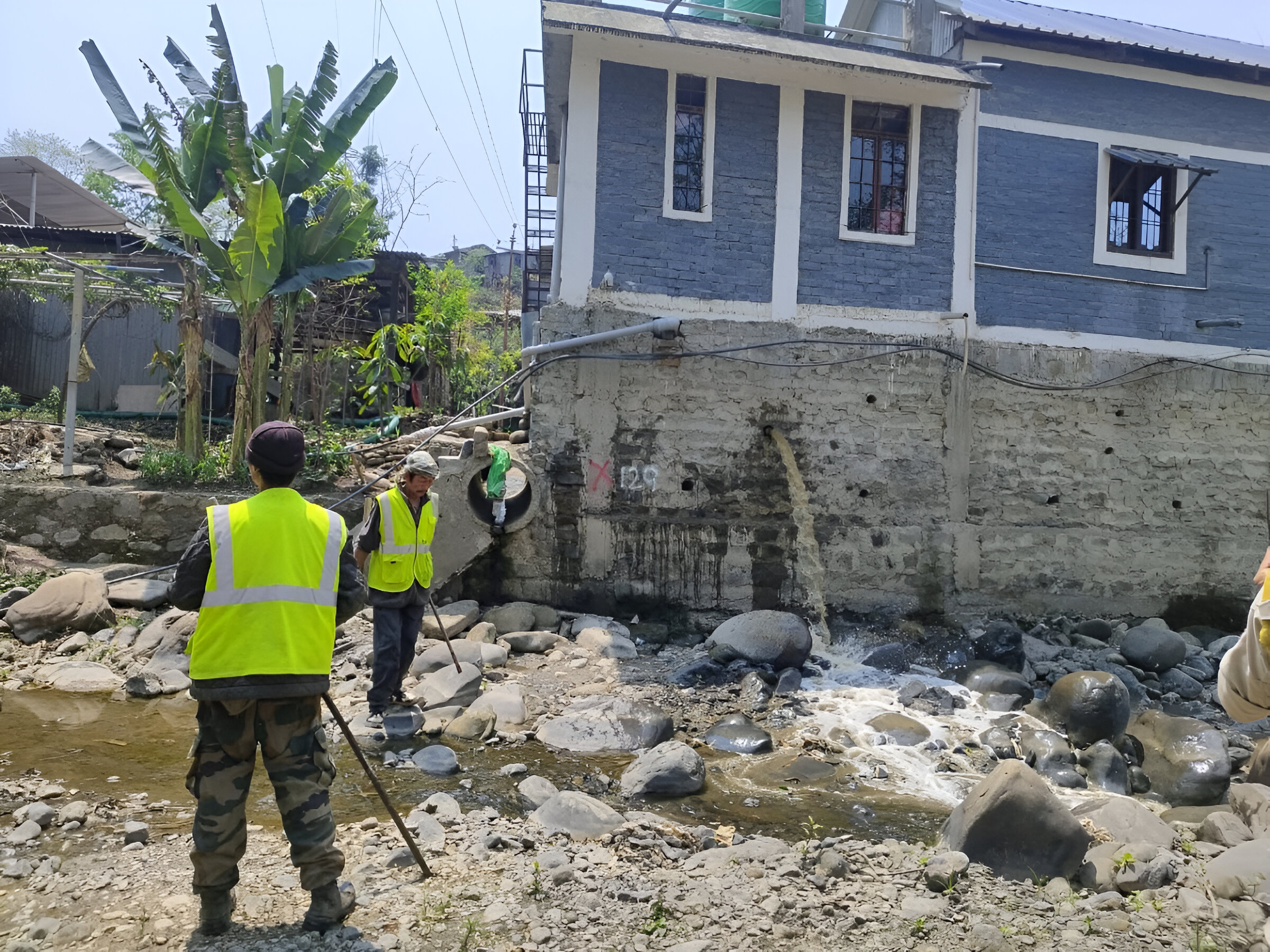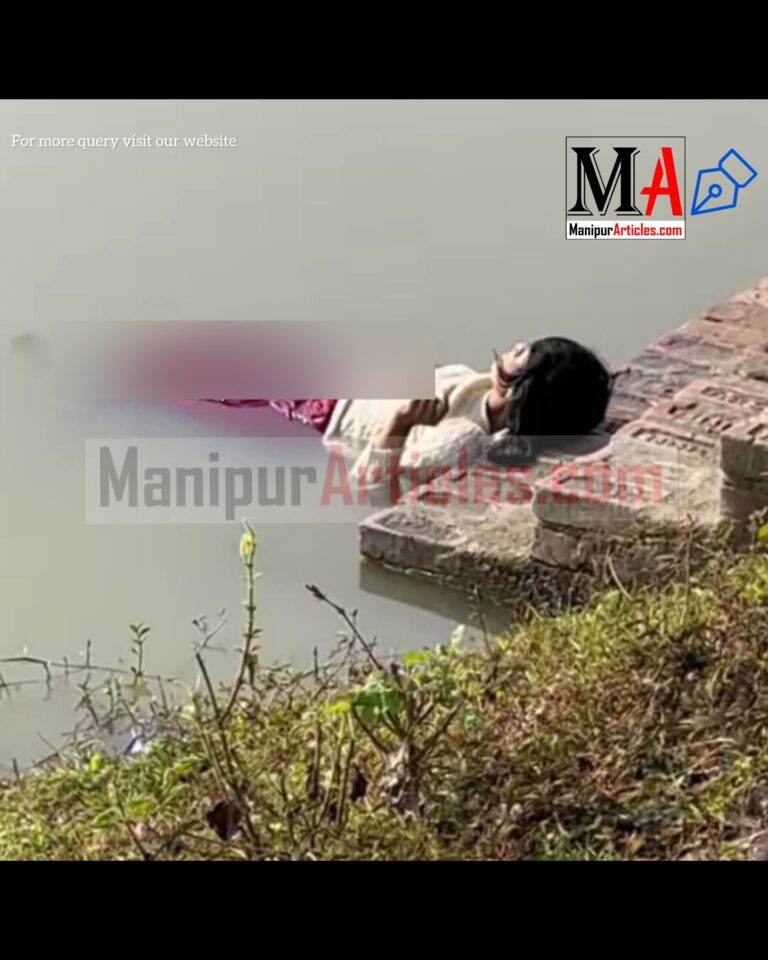Manipur’s Bold Move: Clearing Illegal Structures for a Safer and Cleaner Environment
Summary:
In a decisive effort to enhance public safety and cleanliness, Manipur’s Senapati District Administration initiated extensive eviction drives along National Highway-02 and the Senapati River. These operations targeted unauthorized structures and drainage obstructions, aiming to promote environmental well-being and ensure the safety of the local populace.
Introduction: Addressing Encroachments for Public Welfare
Manipur’s scenic landscapes and vibrant communities have long been cherished by residents and visitors alike. However, unauthorized constructions and encroachments have increasingly posed threats to public safety and environmental health. Recognizing these challenges, the Senapati District Administration embarked on a mission to reclaim public spaces and restore the natural flow of the region’s waterways.
The Eviction Drive Along NH-02: Reclaiming the Right of Way
National Highway-02 serves as a vital artery, connecting various parts of Manipur and facilitating the movement of goods and people. Over time, unauthorized structures such as houses, boundary fences, and storage units began to encroach upon the 10-meter Right of Way (ROW), leading to congestion and potential safety hazards.Northeast Today
On April 8, 2025, under the leadership of Additional District Magistrate Rang David Kung and CEO of Karong Senapati Town Committee, Adahrii Maheo, a coordinated effort was launched to dismantle these encroachments. The operation saw active participation from the Naga People Organization, Senapati District Students’ Association, Senapati District Police, NHIDCL officials, and local village representatives. The collaborative approach ensured that the eviction process was conducted smoothly, with minimal resistance and maximum efficiency.Northeast Today
Restoring the Senapati River: A Step Towards Environmental Preservation
Parallel to the highway eviction, attention was turned to the Senapati River, a lifeline for many communities. Unauthorized establishments, including toilets, pig sties, poultry farms, and direct waste outlets, had been contributing to the river’s pollution, posing significant health risks.Northeast Today
As part of the “Clean Senapati River Campaign,” the district administration targeted the stretch from Mt. Everest College parking area to Kathikho Karong. Approximately 20 toilets and their outlets, three pig sties, and two poultry farms were dismantled. This initiative not only aimed at cleaning the river but also at raising awareness about the importance of maintaining hygienic practices and respecting environmental norms.Northeast Today
Community Involvement: The Key to Sustainable Change
The success of such large-scale operations hinges on community support. The district administration actively appealed to the citizens of Senapati District to voluntarily remove illegal structures and cooperate with the authorities. This proactive engagement fosters a sense of collective responsibility and ensures that the reclaimed spaces remain free from future encroachments.Northeast Today
Legal Framework and Future Implications
The eviction drives were backed by orders from the Sub-Divisional Magistrate, emphasizing the legal standing of the operations. Residents were forewarned about the consequences of non-compliance, including forcible removal, penalties, and enforcement actions against improper waste disposal. Such measures underscore the administration’s commitment to upholding the law and prioritizing public welfare.Northeast Today
Challenges Faced During the Eviction Drives
Undertaking eviction drives of this magnitude is no small feat. The authorities encountered several challenges, including:
- Emotional Appeals: Residents who had established their homes or businesses over the years found it difficult to part with their structures, leading to emotional confrontations.
- Logistical Hurdles: Coordinating between multiple agencies and ensuring that the eviction process was carried out without causing undue hardship required meticulous planning.
- Ensuring Fairness: It was imperative to ensure that the eviction process was unbiased, targeting all unauthorized structures without favoritism.
The Role of Environmental Advocacy Groups
Environmental organizations played a pivotal role in supporting the eviction drives. Their involvement ranged from raising awareness about the detrimental effects of encroachments to actively participating in the cleanup drives. These groups also acted as mediators, facilitating dialogues between the administration and the residents to ensure a peaceful eviction process.
Economic Implications of the Evictions
While the primary focus was on public safety and environmental cleanliness, the eviction drives also had economic ramifications:
- Short-Term Disruptions: Businesses operating from unauthorized structures faced immediate disruptions, leading to potential financial losses.
- Long-Term Benefits: Clearing the highways and rivers can boost tourism, improve transportation efficiency, and attract investments, leading to economic growth in the long run.
Public Response and Sentiments
The eviction drives elicited mixed reactions from the public:
- Supporters: Many lauded the administration’s efforts, emphasizing the importance of public safety and environmental conservation.Northeast Today+3Northeast Today+3Northeast Today+3
- Critics: Some residents felt that the evictions were abrupt and lacked adequate rehabilitation plans for those displaced.
Lessons Learned and the Path Forward
The Senapati eviction drives offer valuable insights for future operations:
- Community Engagement: Early and continuous dialogue with residents can ease tensions and garner support.
- Transparent Processes: Clearly communicating the reasons for eviction and the legal framework can mitigate misunderstandings.
- Rehabilitation Plans: Offering alternatives or support to those displaced can make the process more humane and acceptable.
Conclusion: A Collective Effort Towards a Better Tomorrow
Manipur’s recent eviction drives highlight the delicate balance between development and preservation. While the removal of unauthorized structures is a step forward, it is the collective responsibility of both the administration and the community to ensure sustainable and inclusive growth. By fostering a culture of compliance, environmental consciousness, and mutual respect, Manipur can pave the way for a safer, cleaner, and more prosperous future.
Frequently Asked Questions (FAQs)
1. What led to the eviction drives along NH-02 and the Senapati River in Manipur?
The drives were initiated to address unauthorized encroachments and illegal settlements that compromise public safety and cleanliness, particularly on vital transportation routes and ecologically sensitive areas along the river.
2. How do these drives improve public safety?
By clearing encroachments, the drives ensure that roads remain unobstructed, reducing accident risks, improving emergency response times, and preventing potential criminal activities in hidden or unregulated areas.
3. What environmental benefits can be expected from these eviction drives?
With illegal structures removed, natural water flow is restored along riverbanks, pollution is reduced, and the area is better managed for ecological balance, reducing the risks of flooding and promoting biodiversity.
4. Are there any challenges or criticisms related to these eviction drives?
Some challenges include the potential displacement of vulnerable groups and short-term disruptions. However, the long-term benefits in terms of public safety, environmental restoration, and economic revitalization are expected to outweigh these temporary inconveniences.
5. How can local residents contribute to maintaining reclaimed public spaces?
Residents can participate by staying informed, engaging in community clean-up initiatives, providing constructive feedback to authorities, and supporting plans for sustainable urban development in their local areas.



